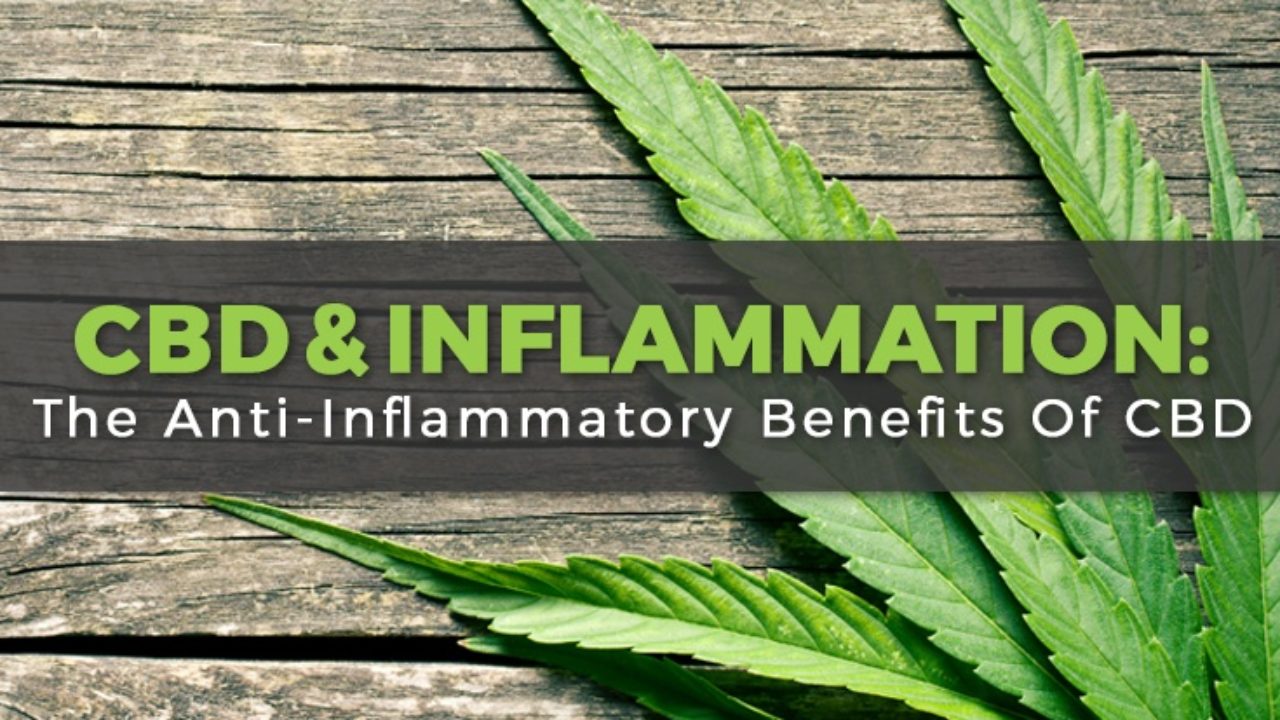Brief overview of CBD and its potential for pain relief
In recent years, CBD, or cannabidiol, has gained significant attention for its potential to alleviate pain. Derived from the cannabis plant, CBD is a non-intoxicating compound that offers a natural alternative for individuals seeking relief from various types of pain. Whether it’s chronic pain, arthritis, neuropathic pain, or cancer-related pain, CBD has emerged as a promising option for many.
While CBD’s popularity has skyrocketed, it’s important to understand the science behind its pain-relieving properties and the potential benefits it may offer. This comprehensive education guide aims to give you a deeper understanding of CBD and its potential for pain relief. By delving into the research, discussing different types of pain CBD may help with, exploring its usage guidelines, and considering legal considerations, we hope to equip you with the knowledge necessary to make informed decisions about incorporating CBD into your pain management routine.
So, whether you’re curious about the benefits of CBD, seeking alternative pain relief options, or simply interested in expanding your knowledge about this fascinating compound, this guide will serve as your compass through the world of CBD and its potential for pain relief.
But before we embark on this educational journey, let’s take a closer look at what CBD is and why it has captured the attention of so many individuals seeking relief from pain. To learn more about what is CBD, click here.
Understanding CBD and Pain Relief
When exploring CBD’s potential benefits for pain relief, it is crucial to have a solid understanding of what CBD is, how it interacts with the body, and whether it can help alleviate pain. This section will delve into these aspects to provide you with a comprehensive education guide.
What is CBD?
CBD, short for cannabidiol, is a natural compound derived from the cannabis plant. Unlike its well-known counterpart, THC (tetrahydrocannabinol), CBD does not have psychoactive properties, meaning it does not produce a “high” sensation. Instead, CBD offers a range of potential health benefits, including pain relief, without the mind-altering effects associated with THC.
How does CBD interact with the body?
To understand how CBD can potentially help with pain relief, it’s essential to grasp its interactions within the body. The human body has an intricate system called the endocannabinoid system (ECS), which plays a crucial role in maintaining balance and overall well-being. The ECS consists of receptors throughout the body, including the brain, immune, and nervous systems.
When consumed, CBD interacts with these receptors, particularly the CB1 and CB2 receptors, primarily in regulating pain perception and inflammation. CBD has been found to have anti-inflammatory properties and can modulate pain signaling pathways, potentially providing relief for various types of pain.
Can CBD help with pain relief?
Pain is a complex and multifaceted experience that can arise from various underlying conditions, such as chronic pain, arthritis pain, neuropathic pain, and cancer-related pain. While research on CBD’s efficacy for pain relief is still ongoing, preliminary studies and anecdotal evidence suggest that CBD may hold promise in alleviating different types of pain.
Multiple scientific studies have explored the potential of CBD for pain relief, with promising results. For example, a study published in the European Journal of Pain found that CBD applied topically could reduce pain and inflammation in arthritic rats. Another study published in the Journal of Experimental Medicine demonstrated that CBD could effectively reduce chronic pain and inflammation in mice.
Moreover, anecdotal evidence from individuals who have used CBD for pain relief has been encouraging. Many people report experiencing reduced pain levels and improved quality of life after incorporating CBD into their daily regimen.
While more research is needed to fully understand the mechanisms and effectiveness of CBD for pain relief, it is important to note that individual responses may vary. It is always advisable to consult with a healthcare professional before starting any CBD regimen, especially if you have an underlying medical condition or are taking medications that may interact with CBD.
In the next section, we will explore the different types of pain that CBD may help with, providing insights into how CBD can potentially address specific pain-related conditions.
CBD offers a promising natural alternative for pain relief, but how exactly does it work? Let’s dive deeper into the mechanisms of CBD’s interactions with the body and its potential to alleviate pain.
Types of Pain CBD May Help With
CBD has shown promise regarding pain relief in addressing various types of pain. Whether it’s chronic pain, arthritis pain, neuropathic pain, or pain related to cancer, CBD has been studied for its potential benefits in alleviating discomfort and improving quality of life.
Chronic pain is defined as lasting for an extended period, typically over 12 weeks. It can stem from various conditions, such as fibromyalgia, multiple sclerosis, or lower back pain. Research suggests that CBD may help manage chronic pain by interacting with the endocannabinoid system, which plays a role in pain regulation and inflammation.
Arthritis pain affects millions worldwide, causing joint stiffness, swelling, and discomfort. CBD has garnered attention for its potential anti-inflammatory properties, which may help reduce pain and inflammation associated with different forms of arthritis, including rheumatoid arthritis and osteoarthritis.
Neuropathic pain arises from damage or dysfunction of the nervous system and can be challenging to treat. Studies have indicated that CBD may relieve neuropathic pain by interacting with receptors in pain perception and reducing inflammation in affected areas.
Cancer-related pain is a complex issue that can arise from the disease or as a side effect of cancer treatments such as chemotherapy. CBD has been investigated for its potential to alleviate cancer-related pain and improve the overall well-being of individuals undergoing cancer treatment. While more research is needed in this area, preliminary findings suggest that CBD may have a role to play in managing cancer-related pain.
It’s important to note that while CBD shows promise in addressing these types of pain, it should not be considered a cure-all or a replacement for professional medical advice. Each individual’s experience with CBD may vary, and it’s essential to consult with a healthcare professional before incorporating CBD into your pain management routine.
The next section will delve into the research and evidence surrounding CBD’s potential for pain relief, providing a comprehensive understanding of the topic.
Continue reading: Research and Evidence
Research and Evidence
When considering CBD’s efficacy for pain relief, it is essential to examine the available research and evidence. Both scientific studies and anecdotal evidence play a crucial role in understanding the potential of CBD in alleviating pain.
Overview of Scientific Studies on CBD and Pain Relief
Over the years, numerous scientific studies have explored CBD’s effects on pain relief. These studies have shed light on the mechanisms through which CBD interacts with the body’s endocannabinoid system and its potential analgesic properties.
One notable study published in the European Journal of Pain found that CBD when applied topically, could help reduce pain and inflammation in rats with arthritis. Another study published in the Journal of Experimental Medicine demonstrated that CBD could significantly reduce chronic pain and inflammation in mice.
Moreover, a review published in the Journal of Clinical Pharmacy and Therapeutics analyzed multiple studies and concluded that CBD showed promise in managing various types of pain, including neuropathic pain, cancer-related pain, and chronic pain.
While these scientific studies provide valuable insights into the potential benefits of CBD for pain relief, it is important to note that further research is needed to fully understand its mechanisms of action and efficacy in different pain conditions.
Anecdotal Evidence and Testimonials
In addition to scientific studies, anecdotal evidence and testimonials from individuals who have used CBD for pain relief also contribute to the growing body of evidence. Many people have reported experiencing positive outcomes and relief from pain after incorporating CBD into their wellness routine.
These personal accounts often highlight the diverse range of pain conditions CBD may help with, including chronic pain, arthritis pain, and neuropathic pain. While anecdotal evidence cannot be considered conclusive proof, it provides valuable insights into the potential benefits and experiences of individuals who have used CBD.
It is important to approach anecdotal evidence cautiously and recognize that individual experiences may vary. Before incorporating CBD into a pain management plan, consulting with a healthcare professional is always recommended.
By considering both scientific studies and anecdotal evidence, individuals can gain a comprehensive understanding of the potential of CBD for pain relief. This knowledge can help them make informed decisions about incorporating CBD into their wellness routine.
To learn more about CBD and its potential benefits, you can read our article on what is CBD.
How to Use CBD for Pain Relief
There are various methods and considerations to remember when it comes to utilizing CBD for pain relief. Understanding the different forms of CBD products, dosage guidelines, and potential side effects and precautions is essential for maximizing its benefits and minimizing potential risks.
Different Forms of CBD Products
CBD is available in various forms, allowing individuals to choose the best method for their needs and preferences. Some of the most common forms of CBD products include oils, edibles, topicals, and capsules. Each form has its unique advantages and considerations.
- CBD oils are popular due to their versatility and ease of use. They can be taken sublingually (under the tongue) for fast absorption or added to beverages and food for a more enjoyable experience. Oils are often favored for their rapid onset of effects.
- CBD edibles, such as gummies or chocolates, offer a convenient and discreet way to incorporate CBD into your daily routine. They provide longer-lasting effects as the CBD is metabolized through the digestive system.
- CBD topicals are formulated as creams, lotions, or balms applied directly to the skin. They are commonly used to relieve localized pain and soothe sore muscles and joints.
- CBD capsules provide a precise and convenient way to consume CBD. They are pre-measured and can be easily integrated into a daily supplement routine.
When considering which CBD product to choose, it’s important to consider factors such as the desired onset and duration of effects, personal preferences, and any specific needs or restrictions.
Dosage Guidelines
Determining the right CBD dosage for pain relief can be challenging, as it varies depending on factors such as the individual’s body weight, metabolism, and the severity of the pain. It is always advisable to start with a low dosage and gradually increase it until the desired effects are achieved.
Dosage recommendations can also vary based on the form of CBD product being used. For example, CBD tinctures often come with a dropper, allowing precise measurement. On the other hand, CBD edibles typically provide a predetermined dosage per serving.
To further complicate matters, there is currently no standardized dosage for CBD, as research is ongoing. However, a general guideline is to start with 5-10 mg of CBD daily and assess how your body responds. From there, you can adjust the dosage as needed.
It’s worth noting that consulting with a healthcare professional experienced in CBD use is highly recommended, as they can provide personalized guidance based on your specific circumstances.
Potential Side Effects and Precautions
While CBD is generally well-tolerated, knowing about potential side effects and precautions is important. Common side effects may include dry mouth, drowsiness, and changes in appetite. These effects are typically mild and temporary.
Additionally, CBD may interact with certain medications, so discussing CBD use with a healthcare professional is crucial, especially if you are taking any medications or have underlying health conditions.
Furthermore, it is important to ensure that your CBD products are of high quality and sourced from reputable manufacturers. This can help minimize the risk of potential contaminants and ensure that you are receiving the intended benefits of CBD.
In conclusion, understanding the different forms of CBD products, dosage guidelines, and potential side effects and precautions is essential for using CBD effectively and safely for pain relief. By being well-informed and seeking guidance from healthcare professionals, individuals can make informed decisions about incorporating CBD into their pain management routine. Remember, it’s always best to consult a healthcare professional before starting any new supplement regimen.
For more information on CBD, visit CBD Information.
Legal Considerations
CBD’s legal status in the United States is a complex and evolving topic that requires careful attention. While the 2018 Farm Bill legalized the cultivation and sale of hemp-derived CBD at the federal level, there are still certain legal considerations to remember.
The current legal status of CBD in the US
Under the 2018 Farm Bill, CBD products derived from hemp are legal on a federal level as long as they contain less than 0.3% THC (the psychoactive compound found in cannabis). This distinction is important because hemp is classified as a cannabis plant with low THC content, while marijuana contains higher levels of THC.
However, it’s crucial to note that individual states have the authority to enact their laws regarding CBD. This means that while CBD might be legal at the federal level, its legality can vary from state to state. Some states have embraced the legalization of CBD in all forms, while others have imposed restrictions or outright bans.
State-specific regulations
To navigate the legal landscape surrounding CBD, it’s essential to familiarize yourself with the specific regulations in your state. Some states have established comprehensive frameworks that regulate CBD production, sale, and use, while others have more limited policies.
For example, in states like California and Colorado, where cannabis is legal for both recreational and medicinal use, CBD products are generally widely available. On the other hand, states such as Idaho and Nebraska have stricter regulations that may limit the availability of CBD products.
To ensure compliance with state laws, it’s advisable to consult your state’s Department of Agriculture or Health for guidance on the legal status of CBD. They can provide the most up-to-date information regarding any restrictions or requirements in your area.
It’s important to note that even if CBD is legal in your state, there may still be certain restrictions. For instance, some states may limit the types of CBD products that can be sold or require specific labeling and testing standards.
In summary, while CBD derived from hemp is legal at the federal level, it’s crucial to research and understand the legal status of CBD in your specific state. Staying informed about the ever-changing regulations will help ensure you can safely and legally incorporate CBD into your pain relief routine.
Consulting a healthcare professional before using CBD is always recommended to ensure it aligns with your specific needs and circumstances.
Learn more about CBD and its legal status.
Conclusion
In conclusion, CBD holds great potential as a natural remedy for pain relief. Throughout this comprehensive education guide, we have explored the various aspects of CBD and its potential benefits for managing pain.
CBD, or cannabidiol, is a compound derived from the hemp plant that has gained significant attention recently for its numerous therapeutic properties. CBD offers a promising avenue for individuals seeking relief from pain, from its interaction with the body’s endocannabinoid system to its potential analgesic and anti-inflammatory effects.
Research studies have shown promising results regarding CBD’s effectiveness in managing different types of pain, including chronic pain, arthritis pain, neuropathic pain, and cancer-related pain. At the same time, further research is needed to understand the mechanisms behind CBD’s pain-relieving properties fully; anecdotal evidence and testimonials from individuals who have incorporated CBD into their pain management regimens are encouraging.
Regarding CBD for pain relief, various forms are available, including CBD gummies, CBD capsules, and CBD tinctures. The dosage of CBD can vary depending on the individual and the severity of the pain, so it’s crucial to follow CBD dosage guidelines and consult with a healthcare professional to determine the appropriate dosage for your specific needs.
While CBD is generally well-tolerated, it’s essential to be aware of potential side effects, such as dry mouth, drowsiness, and changes in appetite. Additionally, it’s important to consider any potential CBD interactions with other medications you may be taking. By being informed and cautious, you can make educated decisions regarding CBD use for pain relief.
In terms of legality, the current status of CBD in the United States is complex and varies from state to state. While CBD derived from hemp with less than 0.3% THC is federally legal, it’s crucial to be aware of CBD legality in your specific state to ensure compliance with local regulations.
In summary, CBD shows promise as a natural alternative for pain relief. However, consulting with a healthcare professional before incorporating CBD into your pain management routine is essential. They can provide personalized advice based on your health conditions, medications, and needs.
Remember, this article serves as an educational guide, and it’s vital to gather comprehensive CBD information and make informed decisions regarding your health and wellness. By exploring the potential benefits of CBD and understanding its interaction with the body, you can embark on a journey towards finding relief from pain naturally and holistically.





